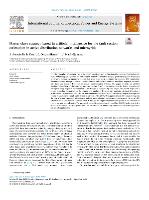Abstract
Fault location plays an essential role in the integration of self-healing functionalities in active distribution networks and microgrids. However, the fault location methods formulation presents great challenges for these types of networks because the operating changes that occur them, such as changes in topology, DER connection/ disconnection and microgrids operating modes. Several fault location solutions have been proposed; nevertheless, these are strongly dependent on robust communication systems. This paper presents an artificial intelligence-based master–slave strategy for the estimation of the fault section in active distribution networks and microgrids using dispersed measurements. The strategy is composed by two stages. The master stage uses a genetic algorithm that determines the location and number of devices which maximize the faulted location e performance. The slave stage uses artificial neural networks to predict the fault section by using local voltage and current measurements trough an intelligent electronic device (IED). This approach is useful because it neglects the need of a robust communication systems and synchronization process between measurements. Here, each IED estimates the faulted section and then sends it through the single communication system to the distribution system operator control center. The presented method is validated on the modified IEEE 34-nodes test feeder where the accuracy of the strategy was 95%. The results obtained and its easy implementation indicate potential for real-life applications.














